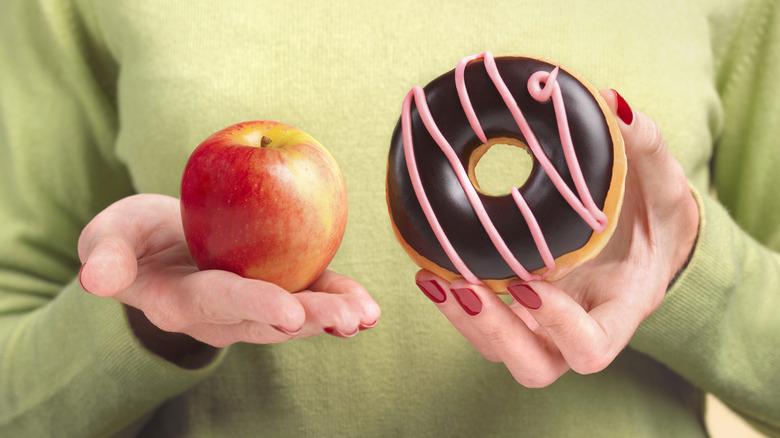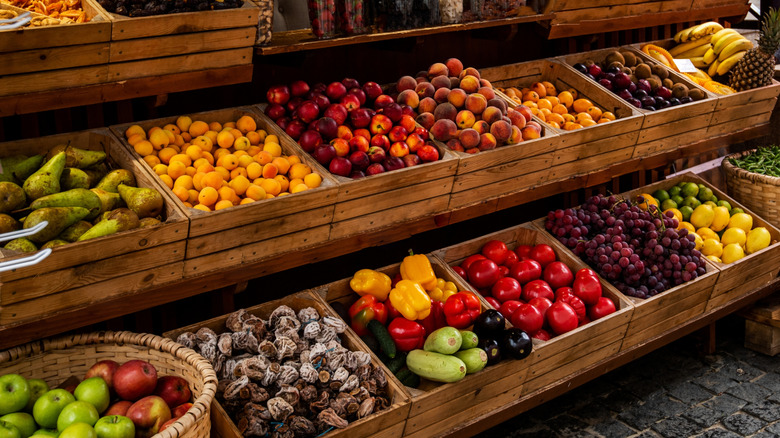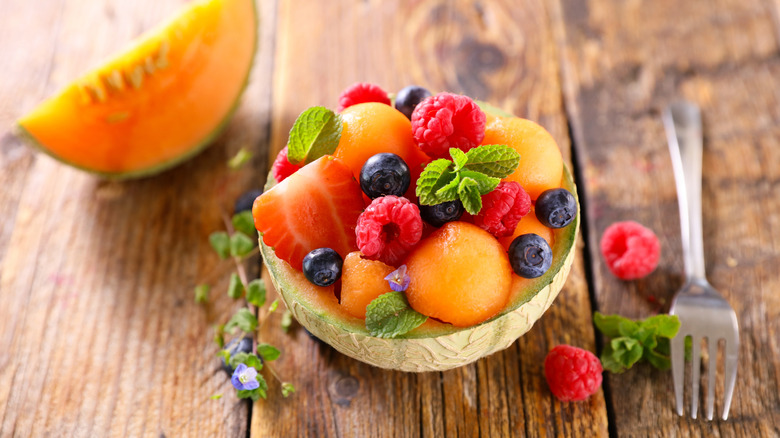How To Trick Your Mind Into Eating Healthy Snacks More Often
It's the middle of the afternoon; you're feeling stressed and a bit peckish. You're fighting the urge to buy that candy bar beckoning you from the vending machine in your company's breakroom. It's an all-too-common habit that you want to fend off. But how?
Scientists have found several ways people can trick their brains into eating healthier snacks to keep them full while still feeding that impulse monster. They include storing healthier choices at eye level, combining relaxation techniques with eating fruit or other nutritious pick-me-ups, and simply not buying the foods you want to avoid, particularly if you work from home.
The prime reason people snack is stress. Several studies have revealed that when people are stressed, eating less-nutritious "comfort food" signals the brain's reward system, which can lead to habitual stress eating — a scenario similar to abusing drugs, which affects the same pleasure-seeking regions of the brain. But there are ways to fool yourself, even when stressed, to grab foods that are more beneficial to your health.
Visual cues can guide you to make healthy choices
One study demonstrated how food displayed in a hospital cafeteria impacted people's choices in purchasing cold beverages, premade sandwiches, and chips. Over a period of three months, researchers collected sales data for these items after they were arranged to display the healthiest items at eye level. They found that when less nutritious sugary sodas were placed lowest in a display, their sales decreased significantly while sales for bottled water stored at eye level increased. It can be inferred that doing the same thing at home will increase the likelihood that you'll choose the snack that will have the greatest positive impact on your health. However, this may not work for everyone — your yearnings may still have you digging in your cupboards for the snack your brain insists it needs.
Though you won't likely do this at home, in phase one of that same study, researchers added color-coded labels for food and drink items: Red for least nutritious, green for most, and yes, you guessed it, yellow for the ones in between. That alone increased sales of healthy items while decreasing sales of less nutritious options. Researchers suggest this may be an option markets and restaurants could use to steer people toward making more nutritious choices.
Combine relaxation with nutritious snacking
According to another study, eating fruit instead of candy or chips can be just as satisfying. Researchers also found that combining fruit intake with a six-minute relaxation exercise is even more effective, retraining your brain to recognize fruit as a comfort food to stave off hunger and stress.
The study used a tried-and-true Pavlovian method to retrain people's brains to crave fruit rather than snacks rife with refined sugar when they were feeling stressed. While all participants were trained in progressive muscle relaxation — a six-minute stress-reduction exercise during which people tense and relax various muscles in a set sequence — some were also instructed to eat fresh fruit about five minutes into the exercise. After just one week, while simply eating fruit put people more at ease, combining it with the relaxation exercise had participants starting to identify fruit as comfort food.
"Anytime two things happen at the same time, your mind creates a connection between them," researcher A. Janet Tomiyama told the Washington Post. "By pairing relaxation and fruit together, your mind starts to see them as the same thing. After a while, you won't even need to do the six minutes of relaxation: All you'll need to do is eat the fruit, and you'll get that same relaxation benefit." And if a nutritious snack means fruit, you might want to know which fruits contain the most sugar or how to choose the best blueberries.


